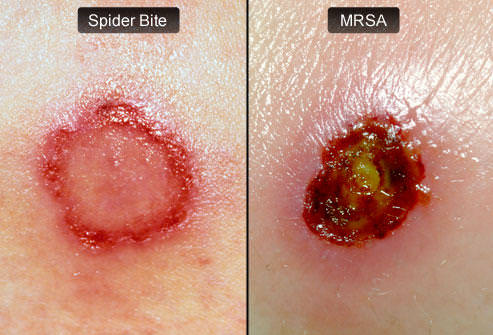What is MRSA (Methicillin-resistant Staphylococcus aureus) Staph Infection?
MRSA is short for Methicillin-resistant Staphylococcus aureus. This is a kind of bacteria that has lots of different strains. This is common to a lot of people. To have it, is not a life-threatening case. Those who have it may not be aware that they have it. It lives on the skin’s surface and the inside of the nose. Through a contact, this type of bacteria can spread from person to person.
When one is infected by bacteria, antibiotics are usually prescribed to kill it. What makes MRSA different from other bacteria is its ability to resist antibiotic treatments. Even methicillin do not take effect. It is an antibiotic that belongs to the penicillin family. People with high immune system can quickly fight MRSA infection. But those who have poor immune system will have a hard time fighting it. MRSA can cause boils. It can also cause septic wounds and other disorders. This can even cause problems in the heart. In serious cases, it can even cause death.
MRSA Symptoms: What are the Symptoms of MRSA?
Like any disorder, MRSA infection shows signs and symptoms. The signs of MRSA depend on what body part is affected. In some cases, MRSA infection does not have any signs at all.
Skin Infection- One sign of MRSA is a skin infection. Since the bacteria live on the top of the skin, to have skin infection is very likely to happen. These are the skin infections that serve as symptoms of MRSA.
Boils– This skin condition is a sign of MRSA. This looks like insect bites. They appear like redness and small bumps. They are painful to the skin. The bacteria get to the skin through a cut. It may also enter through the hair follicle. When it enters the skin, it will develop into a small bump. The swollen skin may also have pus inside it.
Cellulitis-This is a skin disorder that is caused by bacteria. This happens when the bacteria get into the deeper parts of the skin. The fatty parts and the deep skin tissues are infected. When a person has this, the skin will feel hot. Pain is also felt. The skin may even turn red. There might be also swelling of the skin.
Invasive Infections– The MRSA infection may still penetrate deeper. If this happens, more health problems arise. This is because the infection has already entered the bloodstream. The lungs may also be infected. When this happens, he person may have.
Fever – temperature of 38 Deg.C or higher.
Dizziness– the feeling of having a light or heavy head.
Headache– usually happens when one has high fever.
Chills– usually happens if there is high fever.
Muscle pain and swell– feeling of unwell is usual, if one has an infection.
Pain in the joints– this is a common feeling if one suffers from an infection.
Shortness of breath– this happens if the infection goes to the lungs.
Coughing– this happens because the lungs are infected.
If not treated at once, the infection leads to a more serious health problem. That is why if MRSA infection is suspected, consult the doctor fast. The doctor will perform several tests. This procedure will diagnose the case. If not given proper attention, the person might suffer from the following:
[starlist]
- Necrotising fasciitis or flesh-eating infection
- Sepsis or blood poison
- Endocarditis or infection of the heart’s lining
- Osteomyelitis or bone infection
- UTI or Urinary tract infection
- Pneumonia and lung problems
- Septic arthritis or joint inflammation due to bacteria
- Septic bursitis or bursa inflammation due to bacteria
[/starlist]
What are the MRSA Treatments?
MRSA infection can be cured. Despite being resistant to antibiotic, there are brands that can treat this condition. The drugs that can treat MRSA include bactrim and vancomycin. There are also antibiotics that can be injected to treat this case.
Doctors have to also treat symptoms of MRSA infection. The following are given to treat MRSA symptoms:
Antibacterial body wash– This kind of treatment is given if a person is detected with MRSA. It is used to clean the skin. There are also treatments in powder or cream form. It is a topical treatment applied to the skin. The cream is used if the infection is in the nose. There is also an antibacterial shampoo. This is used if the scalp is infected. The product will be used for five to seven days. The person does not need to go to the hospital to apply it.
Cut and drain– This is used to treat boils. It is done by piercing the top part of the boil. A sterilized needle is used to cut it. It is done to let out the pus inside the boil. The pus has to be drained well. This also relieves pain. The simple cases of boils do not need anaesthesia. But if the boils are severe and too many, it must be done to numb the skin.
Antibiotic tablets– This kind of tablet is given to treat cellulitis. This affects the soft, deep parts of the skin. Due to this, a five to ten day treatment is needed. For serious cases, injections are given for 7 – 14 days.

